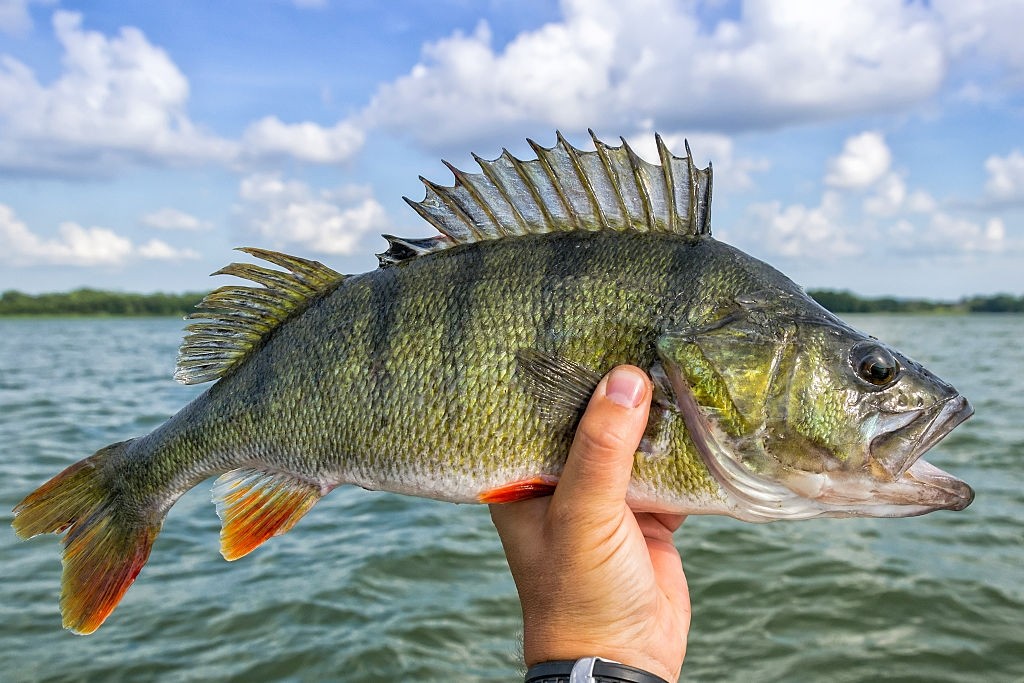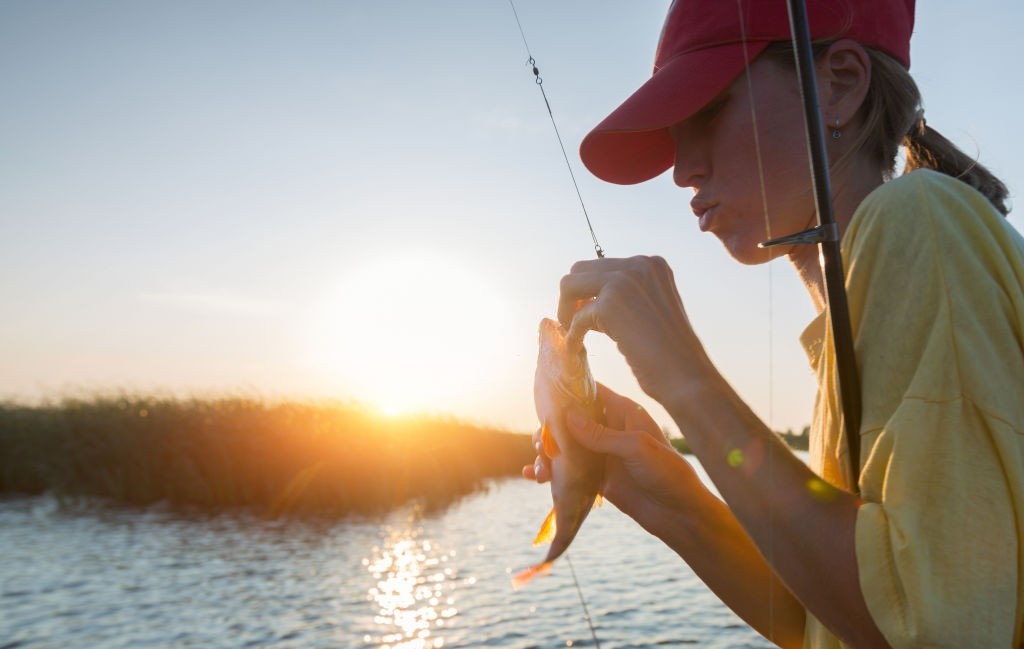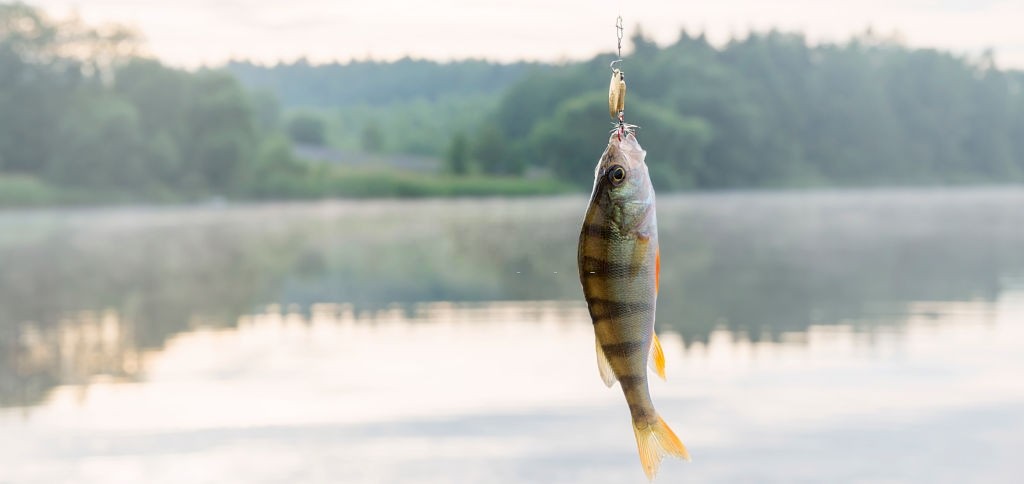When the season is perfect, catching perch is actually not as tough as you assume.
Ask every pro for perch fishing tips and they’ll tell you one thing:
Timing is essential to bagging a huge catch.
So, if it is your first time trying to catch this fish, keep reading. These are insider tips you need to know to elevate your game just like a pro.

Perch Key Facts – Know the Basics
A perch is known for its yellow or somewhat golden color with vertical stripes of a darker hue.
These tiger-looking stripes are common among males during the spawning season. On the other hand, younger perch males hardly have this distinct appearance.
While perch is not your usual big fish, many anglers are drawn towards it. In fact, this fish barely tips the scale at 4 pounds – sometimes even less. There are perch fish reaching about 5 pounds, but it is not a typical scenario.
But what attracts many anglers to this fish is the taste. This is great when grilled whole or filleted. Either way, you can count on the interesting flavor and aroma of freshly-cooked perch. And of course, it’s a fun catch, as well.

Now, as for their preferred environment, perch commonly hangs around in temperature climates and cooler water from 63 to 77 degrees. They also seem to handle cold water without a problem. But once it dips under 50, perch stops growing. When exposed to warmer water, they are likely to grow bigger and faster, although this is their less preferred temperature.
For the most part, you cannot expect to see a lot of perch during the middle of summer. This is a very stressful time of the year for them. Thus, feeding is not their usual activity. This is why it is best to try to catch a perch during spring or the early parts of summer.
Catching Perch – Is It for the Pros Only?
You may be wondering – what goes on in the inner workings of the perch’s brain?
How do you catch these little devils easily?
As we have mentioned earlier, perch is not a big fish. Thus, they are usually food for the bigger guys such as the crappie, trout, muskie, bass, and oddly enough, the larger perch. But they are not only tasty for their fellow finned friends. Perch is also a treat for winged creatures such as kingfishers and eagles.
Interestingly enough, perch are not excellent swimmers. Isn’t that a bit too odd, knowing it’s a fish, after all?
The reason behind this fact is that they tend to be sluggish animals. When they try to accelerate, they do so at a much slower pace. This is why their predators easily spot and catch them… Including avid anglers like you!
In other words, a perch appears like an easy meal to bigger fish, birds, and other creators who feed on this fish. Plus, there are many perch out there. So, if a starving muskie just happens to be around, it is sure to bite on a slow and sluggish perch swimming around.
Understanding Perch Behavior
So, we have established the fact that a perch is not the fastest swimmer out there.
What is the implication of this unique characteristic to its behavior?
They understand how tough it is to survive a predator lurking behind. This is why they are often found in a big group.
But one thing to note about this interesting feature is that they are size-specific. They swim in schools along with fellow perch that is their size. The reason behind this is to steer clear from cannibalism. They want to remain with folks that look like them.
As for their favorite hiding place, there are quite a few they particularly prefer. For instance, they like to seek out the structure from weedbeds, downed trees, and the brush. As long as it can offer them protection and safety from predators, they make sure to get it.
An even better and more secure hiding spot for them is close to the bottom of the waters. They feel safer in this area since not many fish choose to stay in that location.
As for anglers finding the perfect spot to catch perch, it’s worth noting that they can never find the fish in open water. This is their way of preventing bigger fish from catching and eating them.
Perch Feeding and Spawning
The life of a perch is indeed full of excitement… And danger.
They are aware of the fact that just one mistake of being in the wrong place and at the wrong time will become the end of them.
As a result, they do not swim around in an area that is deeper than about 30 feet.
Their feeding time is also a bit different from other fish. This is to give way to the fact that they are constantly in danger of being someone else’s meal. Thus, you can expect them to feed at night, during the late afternoon, before sundown, or after sunrise.
On the other hand, they are less likely to be found during the hours outside of the said times of the day or night.
However, there is an exemption to their usual schedule.
When perch are spawning, they can be slightly active and feeding after dark. It is particularly true when the water temperature is from 44 to 55 degrees. This is typical in the spring, and you can find the yellow perch mating in shallower waters.
At this time, they love to feed. This is their most active time of the year, making them quite easier for anglers to catch. Well, at least anglers who understand what makes them tick.
The best seasons for catching perch are in the fall and spring. You may be able to find some perch in the summer, as long as it is not the hottest times of the year. They like cool waters, so it is best to try to catch them during these seasons.
How to Catch a Perch – Perch Fishing Tips

And now, the moment you have been waiting for – how to catch a perch.
There are many things to think about but there are a few ways to do it with success. Here they are:
1. Light is better.
You want to get your most sensitive, lightest line and rod in the tackle box.
The goal is to have your most sensitive tools ready. Otherwise, you will barely even feel your perch biting.
For instance, you may opt for a light power rod or an ultralight. As for a good tackle, it can be the same one you use for crappie.
Now, as for the line, you can do away with the monofilament. But if you are losing hooks or floats, then you may want to use a braided line with a heavier weight. The only thing not quite great about this line is that there is a reduced abrasion resistance to it. Also, typing this kind of line can be a bit tough.
2. It’s in the rigs and hooks.
Another thing you need to think about is the rig and hook you use.
When we talk about the anatomy of a perch, it’s obvious that their mouths are smaller than crappie.
This makes it tougher to catch this fish. So, you want to use a smaller hook, something around sizes 6 or 8.
Additionally, spreader rigs should work well, too. But steer clear from those used for crappie. The hook size is not quite the same as these guys.
Bullet weights rig is even better. This is particularly true when you are working at the bottom.
Read more: Texas Rig Vs Carolina Rig – Which One is Best to Use?
3. Get your slip floats ready.
If you can only have one tackle to use for catching perch, it would be a slip float.
This is essential for this type of perch – you just should not leave home without it. This type of float ensures the most accurate casting. But at the same time, this facilitates accuracy in depth control.
So, if you can invest in a premium slip float, you should definitely go for it.
If you are looking to catch yellow perch, these bad boys are about the same size as crappie. As a result, you may be able to do away with a float for crappie.
Now, here’s something very important to note – braid lines and slip floats don’t mix. The braid wreaks havoc to the insert. This is why you are better off with a monofilament. Period.
Another thing to think about a slip float is how it works.
Using a live bait should make perch fishing a breeze. But if you are going to use this each time, it can eventually lose its touch. After all, snagging can be a common issue whenever you fish over and right around the cover.
With this in mind, you can use a slip float to prevent getting stuck.
Perch simply love the school close to the cover. This, and on the bottom, are their favorite locations. So, if you are using live bait, a slip float is a cool add-on. You should not have a tough time adjusting the depth in the most accurate manner.
Another way to use your live bait is when you use it to catch fish on a downed tree or brush pile. Rigging your live minnow and casting right over and around the area will be sure to yield results. But you sure would want to adjust your slip float. This way, your minnow will be between 6 and 10 inches from the water’s bottom.
Don’t have minnows? You can use waxworms or crickets just as fine.
Additional Tips When Catching Perch

Perch sure love their cover.
On the other hand, it can be very challenging for anglers to catch in thick areas. There are issues with snagging such as in vegetation and similar areas.
While minnows are great since perch love these things, you can also use a soft bait weedless. What’s great about it is that there is no issue with snagging with this bait. You can even fish through those thick weed beds and use a life-like bait. No problem doing these things at all!
As stated earlier, perch thrive in the depths of the water with a cooler temperature. This is why it is best to stick to ledges, drop-offs, and the like if you want to catch your perch.
But during spring, perch prefer to stay in lakes and streams between 6 and 10 feet in depth. You can also locate them quickly as they like to go to areas frequented by many anglers. Tributaries, rocky shallows, and weed beds are their most preferred spots.
But once summer begins, perch fishing gets tougher. They like to go deeper into the water once the temperature rises. This is why a fish finder would come in handy in this case. You should be able to figure out where these little devils are hiding. Mostly, they like a muddy bottom between 20 and 25 feet deep.
Not sure how to go a little deeper to the bottom? A bottom bouncer with a live bait should be very useful. As long as you know where and how deep the perch are, you can go from live bait to a jig. You can even cover a larger area by doing vertical fishing to catch your perch.
Conclusion
It sure is a fun experience trying to catch a perch.
So, whether it is your first time to catch one or you have done this in the past, these perch fishing tips could sure come in handy.
As a supplement, this video can help you out by providing more tips to get you started: